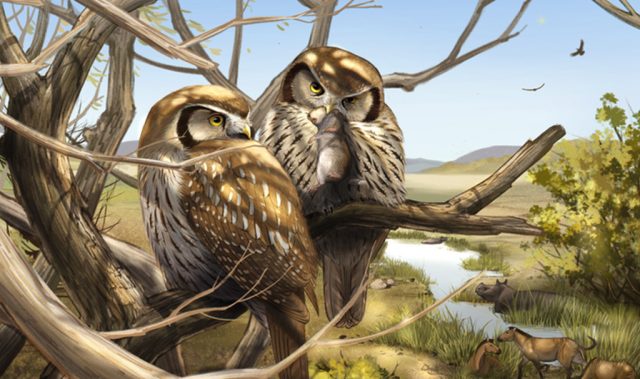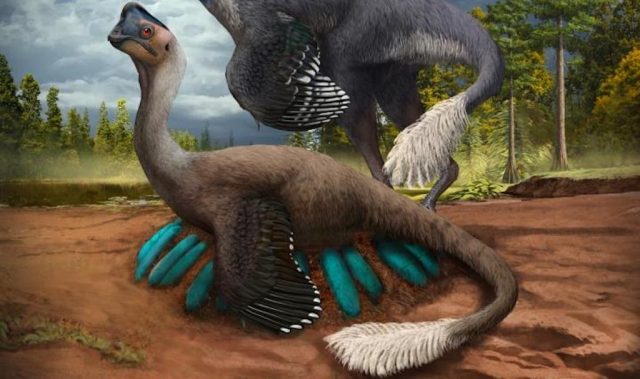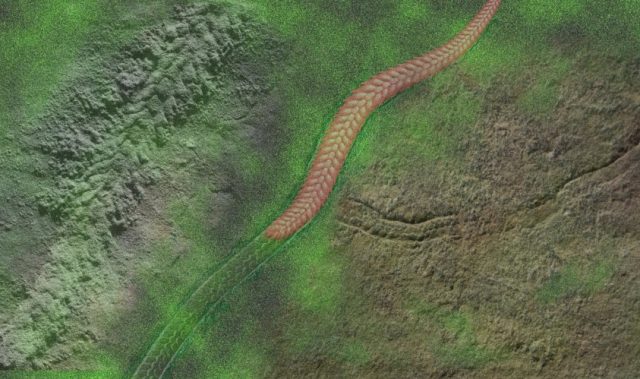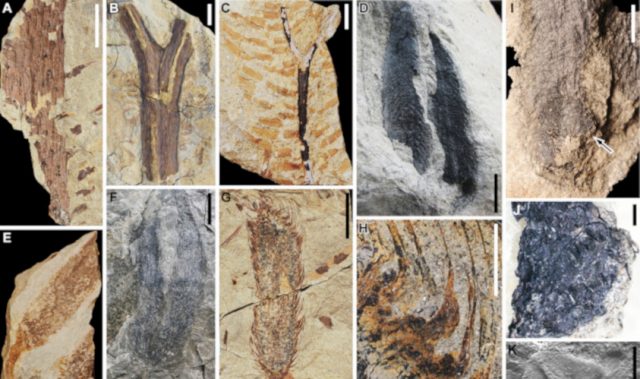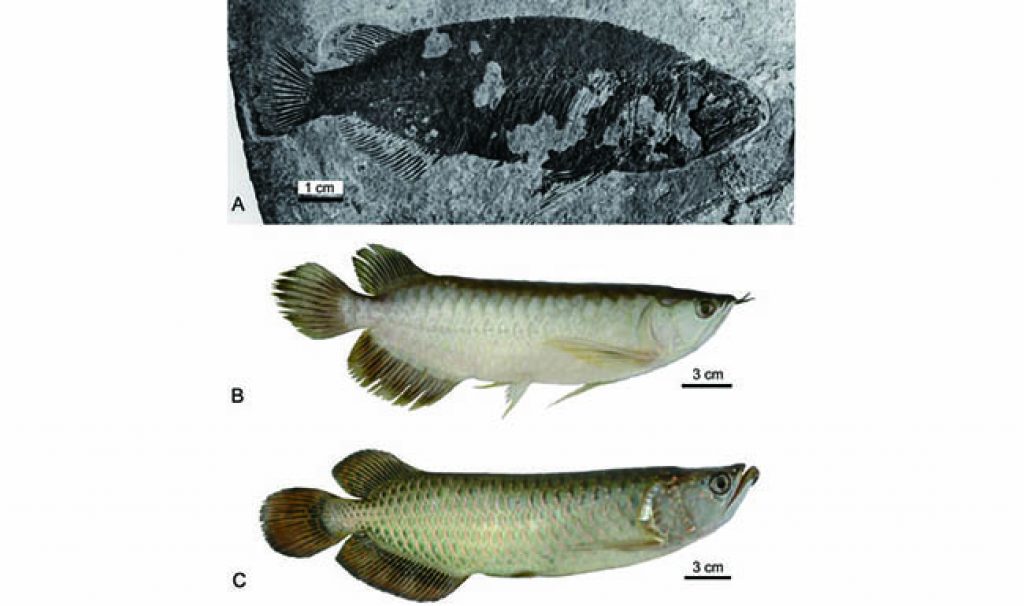
AsianScientist (May 5, 2017) – In a paper published in Vertebrata PalAsiatica, researchers describe a new species of arowana fish from the Early Eocene Xiwanpu Formation in Hunan and the Yangxi Formation in Hubei, China.
The Asian arowana (Scleropages formosus), is one of the most prized and expensive aquarium fishes in the world. All previously known fossil records of Scleropages are scales, otoliths and isolated fragments of bones, and their historical distribution remains a zoogeographical enigma. This finding of the first skeletons of fossil Scleropages ever unearthed, including some exceptionally well-preserved specimens, therefore contributes greatly to our understanding of the evolution of arowana.
“This new fish (S. sinensis) resembles Scleropages in skull bones, caudal skeleton, the shape and position of fins, and reticulate scales. Therefore, it must belong to the genus,” said study co-author Dr. Zhang Jiangyong from the Institute of Vertebrate Paleontology and Paleoanthropology (IVPP) of the Chinese Academy of Sciences.
However, the new fish also has features that are different from all extant species of Scleropages: the nasals do not appear to be ornamented; the sensory pore in the antorbital is large; the posterior infraorbitals are not quite covering the dorsal limb of the preopercle; the posteroventral angle of the preopercle is produced to point; the posteroventral margin of the opercle is concave and the ventral end of the bone is produced to a point; the pectoral fin is very long and extends well behind the beginning of the pelvic fin; the vertebral count is about 46–48; the parapophyses are shorter and the upper and lower caudal rays are nearly as long as the inner rays.
The new fish is closer to its Asian neighbor, S. formosus, than to its southern relative, S. leichardti. Scleropages formosus inhabits natural lakes, swamps, flooded forests, and slowly moving, deep parts of rivers with overhanging vegetative cover. It is a carnivorous fish and its food consists mainly of insects, fishes, worms, small amphibians, small mammals, and even birds. S. sinensis may live in the same natural environment and have a similar diet except for the largest items.
Sexual dimorphism may exist in S. sinensis. The presumed male has a slimmer and shallower body, a relatively larger head, and a deeper mouth cleft. The discovery of Scleropages sinensis sp. nov. dates the divergence of Scleropages and Osteoglossum to no later than the Early Eocene.
The article can be found at: Zhang & Wilson (2017) First Complete Fossil Scleropages (Osteoglossomorpha).
———
Source: Chinese Academy of Sciences; Photo: Zhang Jiangyong.
Disclaimer: This article does not necessarily reflect the views of AsianScientist or its staff.




